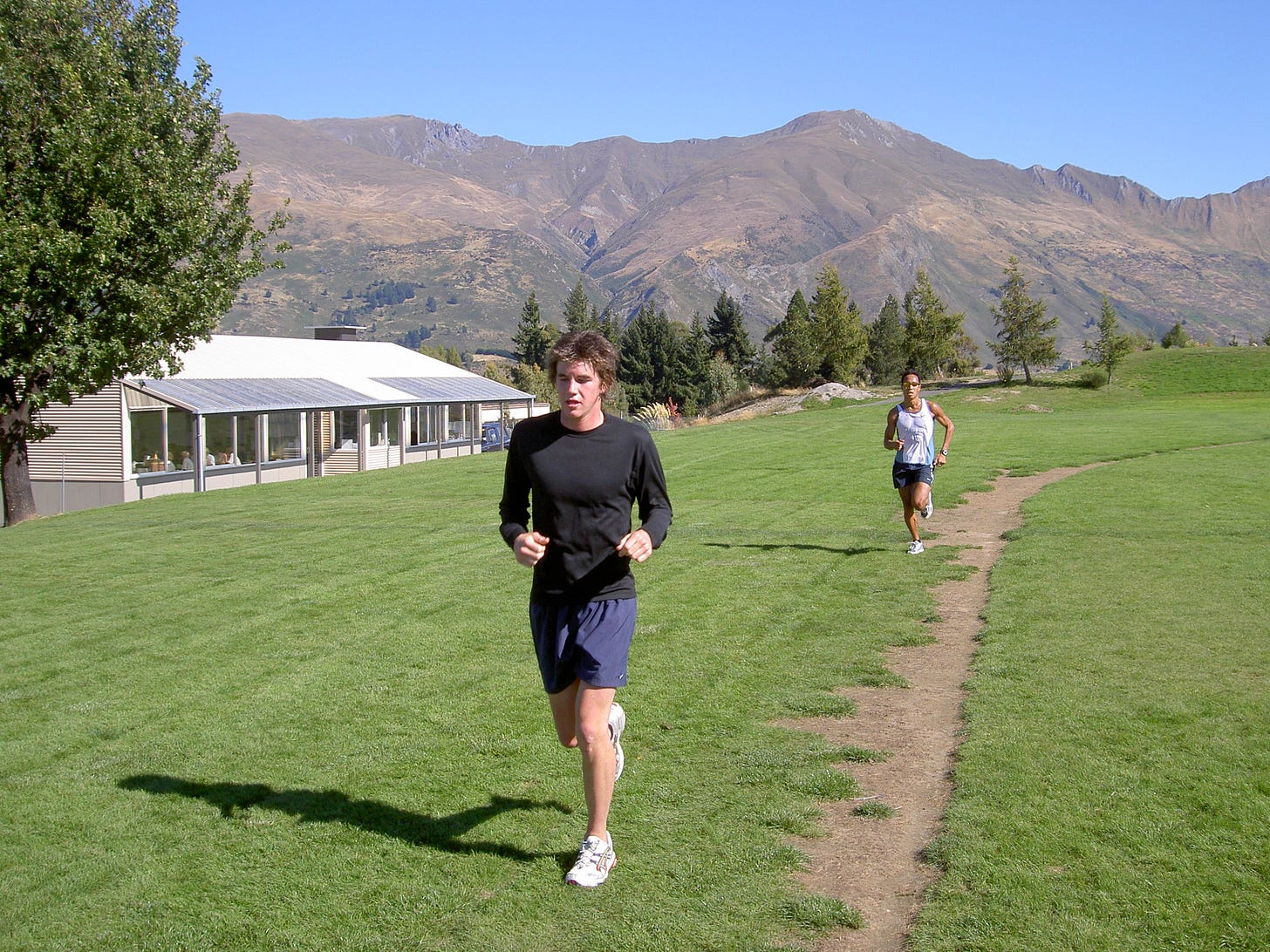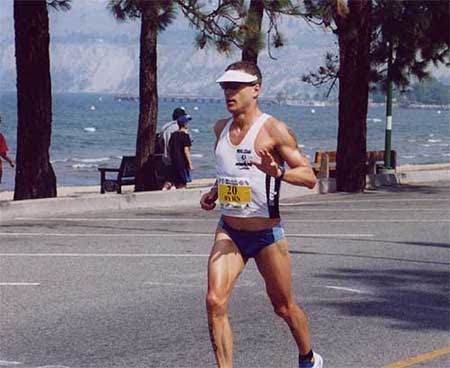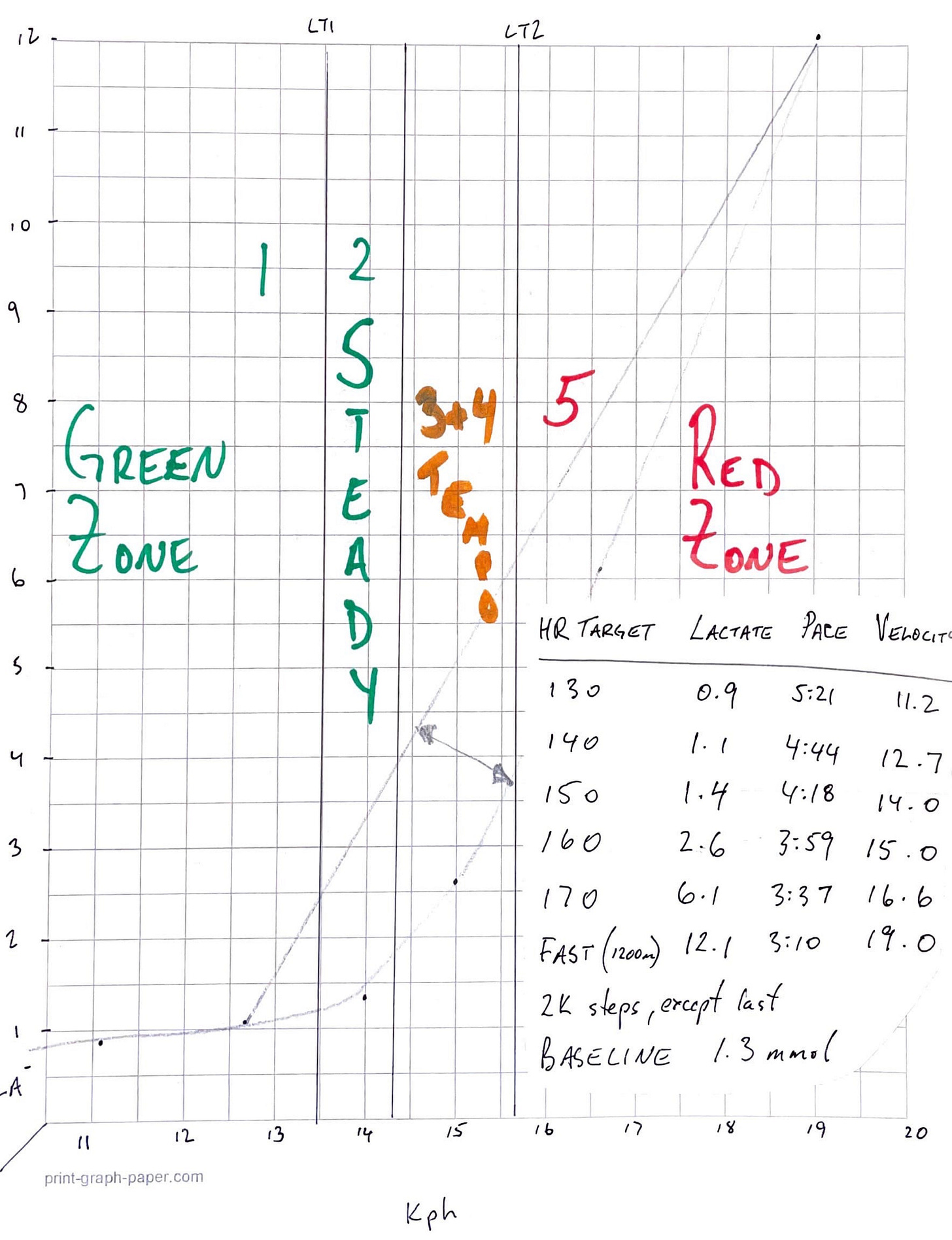Today, we build upon three prior articles:
If you’re curious how to warm-up for the sessions that follow, you’ll find my advice in Warm-Ups & Cool Downs. There are a lot of choices. Best to find what works for you, and stick with it.
Advanced distance runners should read the Advanced Warm-up For Red Zone Running. This warm-up can be used to turn a fast run session into a long & fast workout.
Monday’s article covered Athlete Types.
Elite
Competitive
Recreational
Respect your current category and generate fatigue from workouts that move you towards your goals.
This is a polite way of saying, don’t be a dumb-a$$ with your high-speed training. Too much of what you read in this article will end your season.
Pace Benchmarking
In Building Run Profiles, I recommended you build the data set from Short to Long using:
Six-Minute Test
3K Test
5K Race
10K Race
Half Marathon Race
I also wrote that, practically, a local 5K race is going to be the first data point for many.
Another important data point will be the velocity achieved on the final step of The Progressive Run Test. The test being done either on a Treadmill (5-minute steps) or at the track (1600m or 2000m steps). Below are examples of both types of test, for different athletes.
Not All Velocities Are Created Equal
In creating workouts, be aware that subjective perception, with pace used as a ceiling, is the best way to guide Red Zone training.
Remember that way it feels at the start of an interval is different than the way it will feel at the end of the set.
Many factors will impact an athletes ability to achieve target paces:
Treadmill vs Track
Race vs Training
Altitude & Air Pressure
Humidity, Temperature, Wind
Fatigue Status
Running Surface
Shoes
Similar to heart rate, athletes will have a normal range of paces they can achieve based on the above factors.
Improving VO2max
Start with the end in mind.
What is the goal of Red Zone training?
Improve the athlete’s performance ON RACE DAY.
All of the Red Zone & Core Pace sessions should be done as “controlled” efforts, an effort level of 4.5-5.0 out of 5.0.
Even as controlled efforts, these sessions are tough on the athlete.1
As coaches, and athletes, we have two challenges.
What’s the correct pace to target?
What’s the correct dose to administer?
We know that too fast, and too much, can lead to disaster. The goal being to improve the athlete, and help them achieve their best on race day.
Sustained Speed
Sustained Speed is a concept developed by Veronique Billat and taught to me by John Hellemans. If you’re interested in the early days of using the technique then this Web Archive article I wrote, 20+ years ago, is a reference.
In common usage, Sustained Speed is velocity at VO2max (vVO2, vVO2max). This compares to race pace over 2-5K for fit amateurs and elites.
Strictly speaking, different velocities will be sufficient for an athlete to achieve VO2max. However, for prescribing training paces we’ve found the protocol below to be safe and effective.
Across the 20+ years John has been using Sustained Speed, he’s learned a few things. Specifically, how to better apply Billat’s work for elite and fit amateur athletes.
With this in mind, better to use the protocols you’ll read below, than my article from 2001.
In the rest of this article, John and I are going to outline:
How To Determine Sustained Speed
How To Use Sustained Speed Pace
How To Use Race Pace Training
We will close with advice on dosing based on your Athlete Type.

Determining SS Pace with The Six-Minute Test
I’ll let my younger self explain the test.
After a good warm up of 20-30 minutes, we started the test. Under strict instructions not to blow up, I ran a series of continuous 400m intervals - 80 secs, 79 secs, 78 secs, 77 secs and then an extra 250 meters before time ran out (and I collapsed to my hands and knees). My result was 1850 meters in six minutes.
To get my Sustained Speed Pace (in seconds per 400m) I divided 360 by the number of 400m segments I completed. I managed 4.6 segments, so my Sustained Speed Pace (SS Pace) is 78 secs per 400m, 3:15 minutes per kilometer (K Pace, min/km).
In the workouts that follow, for the sake of clarity, we are going to show my SS Pace equivalents.
Remember to adjust the workouts to reflect your current SS Pace. Like VDOT scores, SS Pace is derived from current performance.
Keep reading with a 7-day free trial
Subscribe to Endurance Essentials to keep reading this post and get 7 days of free access to the full post archives.








